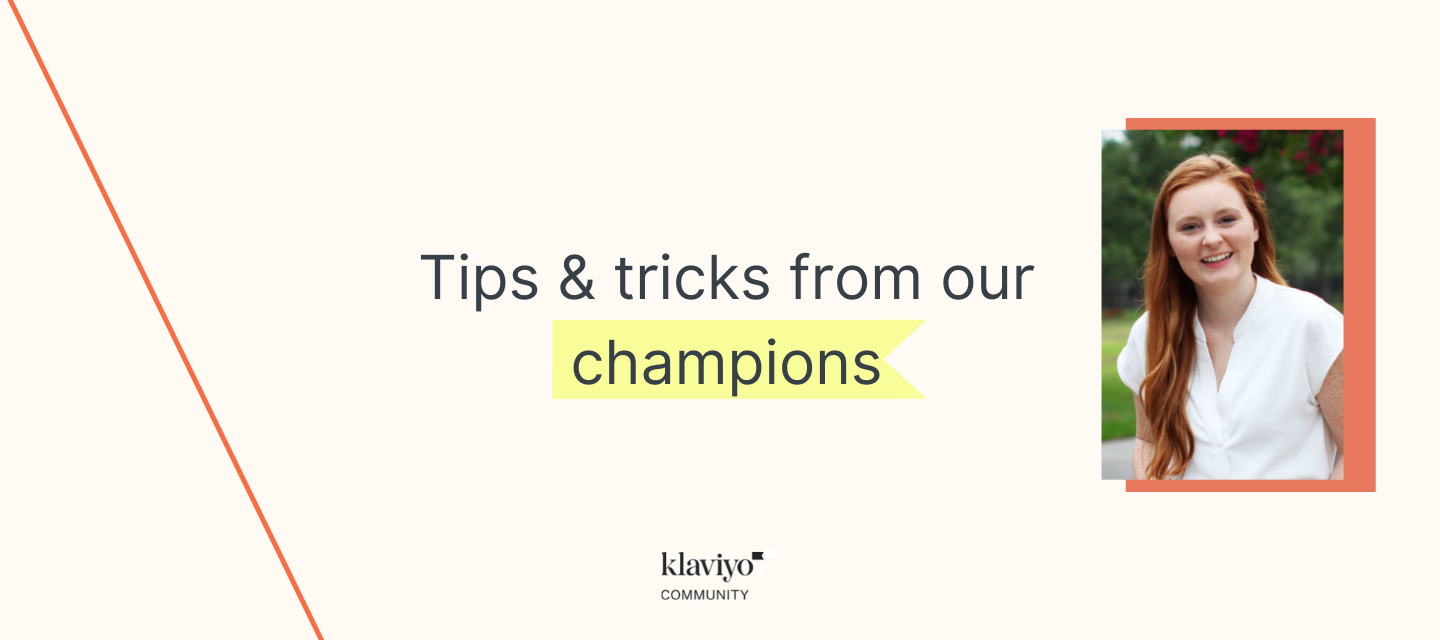Hi Community!
As a Champion, I would love to share some of my experience with you all so we can continue to learn and grow together! One particular story I’d like to share is about a client of mine’s deliverability issues and how we rectified their particular issue, in hopes it will teach and encourage others as well.
The challenge facing our Klaviyo Client, WearMePro (WMP), was the concern that their domain reputation was in bad standing and that their emails were landing in Spam after seeing several sends with low engagement.
Even with their normally avid and engaged following, they saw Open-Rates slipping into 13% or less.
When you fear your brand may be suffering from a similar fate - here is our tried and true strategy to help get your domain back into good standing.
(Keep in mind things like purchased lists will make domain repairing an almost impossible task - so ensure your list only consists of contacts who've organically opted-in to hear from your brand.)
Step One: Get a Pulse
My go-to first task is to get Google Postmasters set up. This completely free tool from Google allows you to get a sneak peek into how Gmail ranks your domain. You can follow these steps here on set-up.
As you can see with WMP, the sending domain was in a dire status - Bad.
For Postmaster Tools you can fall into Bad, Low, Medium, or High status and if you are in Bad, well - it’s bad! It is almost certain that a large volume of emails are going into the Spam inbox at this time and you should make an immediate change to your email strategy.
Step Two: Build Your Layers
Domain repairing can seem complicated but it can be boiled down to a core philosophy. Only email those who are most likely to Open, Click, and not report your emails as spam.
It can seem shocking at first to alienate what may be the majority of your subscriber list who aren’t considered engaged - that is why I recommend you layer your engaged segments.
For immediate repairs, I went with an aggressive segment (and even this can be tightened even more for the days):
This segment has OR statements for what we may consider engaged actions, but grouped with an AND statement that they either must have opened at least 1 email ‘recently,’ or they are brand new subscribers, or Viewed Product (meaning they are recently engaged on-site and are interested).
After sending to this list for a few sends, we can then build a less aggressive segment to send to by opening up those Days and adding in a few additional OR conditions on top of the AND ‘Opened Email’ statement.
To boil it down simply, you’ll have maybe three to four engaged lists - with each get larger and less restricting with the segment rules.
Step Three: Analyze your Content
There are some additional changes you can make to your content to ensure you are getting the most for your repair strategy. I’d recommend trying to leverage valuable content for your subscribers with clear Call-to-Actions.
What is valuable content? Well, it can depend on your brand ,but review your send history to see what emails got your best engagement and start with those. You want content that isn’t just - “Here is a product! Buy It!” Create a connection. Share your story.
Of course, ensure your emails are well-formatted, include alt text on all images, have working links, have a compliant footer that includes your unsubscribe link, etc! Those clean-up items shouldn’t be missed either.
Step Four: Be Consistent
Just sending a single email a month won’t cut it with domain repairs. You need to be reaching out to your engaged lists at least weekly, but this relies heavily on Step Three being carried out successfully.
And With Those Steps…
Your domain can jump up to High status with Gmail as well! For WMP, we were able to get their domain repaired in just a month of targeted sending.
Of course, it can be different for each domain - so if you start this process, don’t give up! Your domain reputation is everything in your email strategy and deserves your full attention. After you are in good standing, be sure to check in after a while to make sure it doesn’t drop again.
-
Learn more about me on my Champion profile page!
Resources Available to Keep Learning:












![[Academy] Klaviyo Product Certificate Forum|alt.badge.img](https://uploads-us-west-2.insided.com/klaviyo-en/attachment/8798a408-1d98-4c3e-9ae8-65091bb58328_thumb.png)
